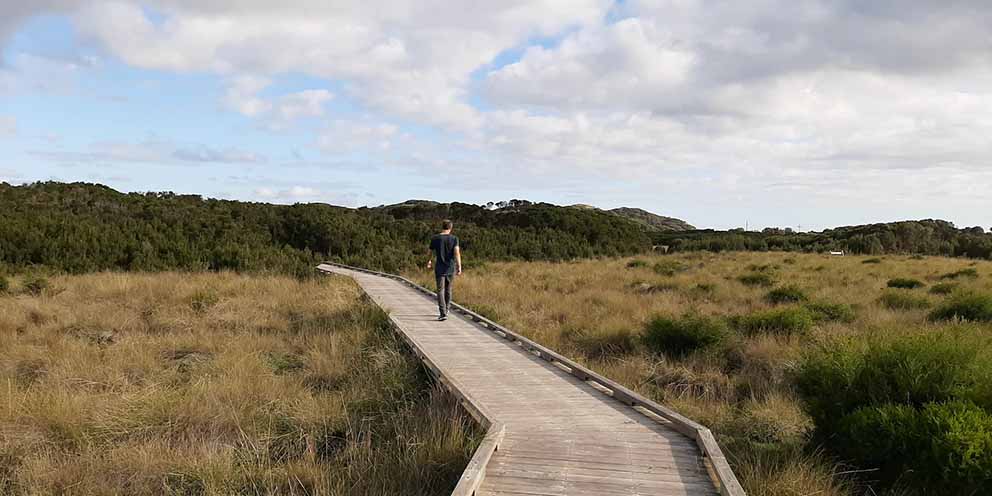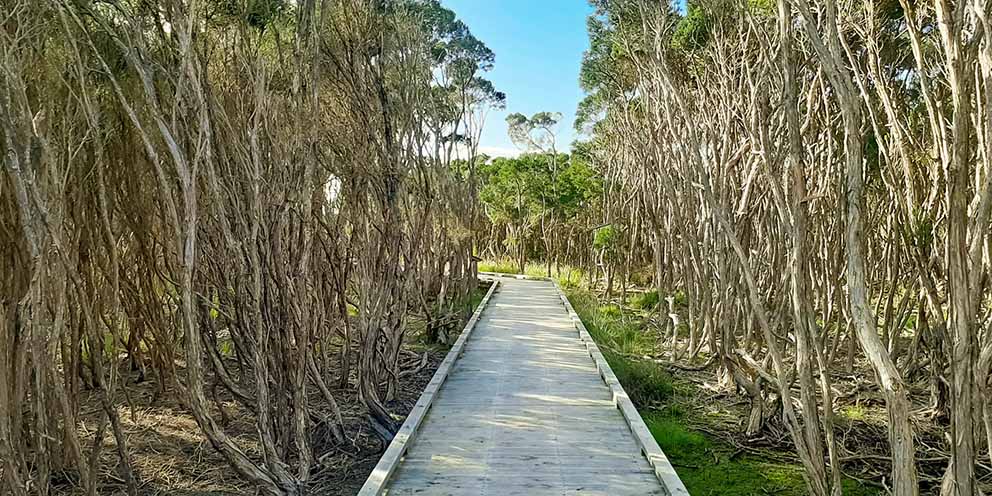THE final chapter in the story of returning Phillip Island’s Scenic Estate to nature is now complete with the last of the unused roads to be discontinued.
Though the roads of the former housing estate are now little more than walking tracks, formally removing them will allow the land to be consolidated into a single parcel to simplify management.
Bass Coast Mayor Michael Whelan last week described it as “a wonderful conservation success story”. “This 28-hectare site of natural bushland holds significant environmental value for Phillip Island.”
This is the second housing estate on Phillip Island – after the Summerlands Estate – to be bought back by governments and returned to nature.
| There was one big difference between the two buyback schemes: while there were 177 houses built at Summerlands, not a single house was ever built on Scenic Estate 337 allotments. The estate was widely known as “Chinamen’s Estate” because many of the buyers lived in Hong Kong. In the 1960s they bought their seaside blocks off Scenic Developments on the basis of some pretty photos and some even prettier marketing. Most had never been to Australia, let alone Phillip Island. The former president of the Phillip Island Conservation Society, Margaret Hancock, remembers giant billboards advertising the estate, sometimes called Holiday Isle Estate, on the main road near the road to Cape Woolamai “We thought no one is going to buy there! It was obviously a very wet area. But there was a good deal of Asian interest and a lot were sold unseen to Asian investors.” | Return to sender For many years, Bass Coast Shire Council had a standing offer to buy back Scenic Estate lots at their current value but by 2013 it had secured only about 100 of the 337 lots. That year the Australian Securities and Investment Corporation ordered a bulk transfer of 57 lots from the now de-registered Scenic Developments to the council. With close to half the lots, the council once again wrote to its list of owners repeating its offer to buy their lots. About 70 council letters of offer sent to owners in Hong Kong were returned to the council marked “Address Unknown”. While many of the owners had moved, many more must have died. After so many years, their descendants are probably unaware that they own a tiny patch of “Happy Isle Estate” on Phillip Island. |
For 30 years after that, the subdivision stood empty. The motocross riders and rubbish dumpers had a field day. But the melaleucas grew back, and the birds and wallabies returned. Local ornithologist June Watkins, who lived opposite, kept a bird diary for 70 years and used to take people on expeditions through the estate pointing out whistling kites, sea eagles and cuckoos.
In 2013 the council declared the estate a conservation reserve, in accord with the long-held dream of local conservationists.
Since then, the council has worked with Phillip Island Nature Parks, Parks Victoria and the State Government to develop boardwalks, a wetlands, viewing platforms, picnic areas and an observation tower.
Shaded by moonah trees at the cliff’s edge, near the narrowest point of Phillip Island, the Swan Bay clifftop offers beautiful views across Western Port to Pleasant Point to the north and Churchill Island to the east.
It overlooks world heritage RAMSAR wetlands, and features rare grasslands and coastal bushland and provides a home for whistling kites and sea eagles, as well as six species of threatened birds.

